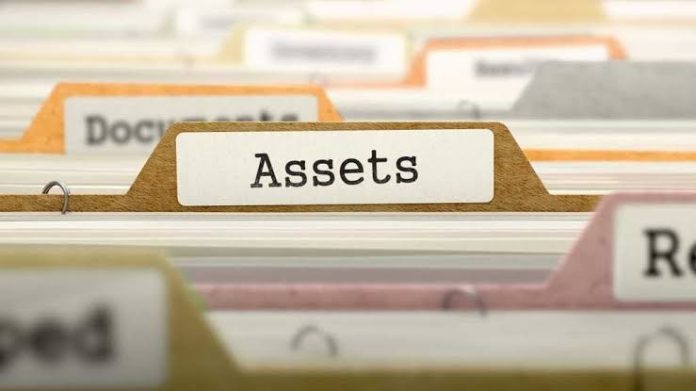5 Assets You Can Buy That Aren’t Real Estate.
Whenever someone says that you should be investing in assets, I immediately think of buying houses or apartment complexes.
Real estate is one of the most popular investments.
It makes sense, because real estate has been around forever and people will always need a place to live and work.
 Learn More
Learn MoreBut, real estate isn’t always the best investment. And it’s out of reach for a lot of people. Where I live, an average single family house costs $850,000. If you don’t have a decent chunk of cash, you’re not able to invest in real estate.
There are a lot of other assets you can buy that don’t cost as much as a house or apartment complex. And some assets require much less work and upkeep.
Even if you can’t buy real estate, you should still be investing and buying things that can make you money.
In this article, I’m going to tell you about 5 alternative investments.
Obligatory side note: this is not financial advice. Please do your own research and consult a qualified professional before you invest.
1. Money making websites
I like to call this digital real estate.
talks a lot about selling and flipping websites for a nice profit. I’ve done this a handful of times and made a few hundred dollars.
But who is buying these websites? And why?
Because they’re an asset.
There are websites that make money from ads, affiliates sales, digital products, online courses, and more. Some websites make $5 or $10 per month. But bigger websites can bring in $100,000+ every month.
The successful websites are showing up at the top of Google search results and can get millions of visitors every month.
The potential is unlimited.
Just like a house or apartment, websites require some upkeep. You’ll need to keep adding some content to the site, and fixing any issues that come up. Of course, you can hire someone to do this for you.
Websites that are making money are bought and sold for 3x the annual income. And the last six months have the biggest impact on the value of the website.
That doesn’t mean it will take 3 years to get your investment back. If the website keeps growing you could make your money back in a few months.
That will require some knowledge of SEO and marketing. And you’ll need to do your due diligence about where the traffic is coming from and how the website is making money.
It’s also important to know how the website is being managed. Was the previous owner adding content to the website? Or did they hire freelance writers?
I’ve seen someone advertise a website as a 100% passive income stream. That’s not true at all.
If you stop taking care of the site, the profit will slowly disappear.
2. Social media accounts
Social media accounts are similar to websites.
These accounts will be about a niche topic — like coffee, travel, or dogs.
There’s an audience that’s interested in a topic and the page owner makes money through affiliate links or sponsored posts.
A social media page needs a few thousand followers to make any money. And there are some accounts that have over a million followers and make no money.
But, you can buy an account that has an established audience and have a money making asset. And some account owners might not monetize their account and not know exactly how much it’s worth.
This is a bit riskier because social media platforms don’t last forever.
Right now, I’d still invest in an Instagram or TikTok account. I think there’s still plenty of potential to make money there.
This also isn’t totally passive. If you want to make money you’ll need to keep posting on the account. If you don’t want to do that, you can easily hire a social media manager.
3. A nice car
I’ve always heard that buying a new car is a liability.
Everyone makes sure you know that the value of your car decreases as soon as you drive it off the lot.
Doesn’t that mean it’s a bad investment?
Not always.
One of my friends bought a brand new Tesla Model S Plaid. It has a $135,990 price tag, 1,020 horsepower, and a 400 mile range.
And it goes 0–60 in 2 seconds.
How is that an asset?
Because you can rent it out on Turo for $500+ per day.
My friend rents out his Plaid for $567/day. It’s his main car, so he only rents it for a few days a month, but that’s an extra $1,000+ per month for very little work.
Turo is like Airbnb for cars. You’ll need to deal with some customers and do the regular upkeep of your car. There are also expenses that can add up quickly.
I’d only do Turo if you have a nicer ($100,000+) car. In my opinion, renting out a Honda Civic for $48/day isn’t worth your time and effort.
But, you’ll never buy a house for $135,000 and rent it out for $500 per night. That’s definitely possible with a luxury car.
This 2016 Rolls Royce is renting for about $500/day and they’re selling for around $200,000.
Screenshot from Turo
With 70 trips, this Rolls Royce could’ve easily earned $50,000+
Renting out a nice car is ideal for people living in a big city that has more tourists. Real estate is also significantly more expensive in busier tourist cities.
Buying a $150,000 car and renting it out on Turo is significantly more manageable compared to buying a rental property.
4. Real Estate Investment Trust (REIT)
A real estate investment trust is like a mutual fund for real estate.
The REIT creates a pool of funds from multiple investors, and the owner invests that money in different real estate: office space, storage units, apartment complexes, etc.
This gives you easy access to real estate deals. Of course, you get a smaller percentage of the income, but the benefits are huge.
You don’t need millions of dollars to invest, and you don’t need to worry about finding deals or managing the property. You invest your money and the rest is done for you.
This is significantly more passive compared to buying real estate yourself.
REITs are bought and sold like stocks.
The good news is that the IRS regulations say that REITs must pay out at least 90% of their taxable profits to shareholders in the form of dividends.
Because REITs are required to pay out 90% of their income as dividends, they consistently offer some of the highest dividends in the stock market. That makes them good for investors looking for a steady stream of income.
The most reliable REITs have a good track record of paying large and growing dividends.
5. Dividend stocks
Dividend stocks are similar to REITs, but not limited to real estate.
Companies typically share their profits with investors through dividends to attract more investors. This gives them access to more money to grow their business.
And the investors are rewarded through dividends.
Some companies will pay a 8–10% dividend, which means investors get $0.08 per year for every $1 they invest in the company. That might not sound like much, but the more money you have invested, the more dividends you’ll receive.
Plus this is actually passive income.
You invest your money and you get monthly or quarterly dividend payments. You don’t need to do any work.
It’s more common for companies to pay around 5% per year. The companies paying higher dividends are typically higher risk. If you’re invested in a stock, there’s always a chance that the value of the stock can go up or down significantly.
Even if a stock pays you an 8% dividend, the stock could lose 10% of its value and you’ll lose money. A high percentage dividend isn’t the only important factor.
To attract investors, companies aim to pay dividends regularly, and increase the amount they’re paying.
For example, AT&T has been paying investors a good dividend for 38+ years.
There are also dividend ETFs which are a group of high dividend stocks.
If you have a portfolio of dividend stocks worth $400,000, you could be earning $20,000 per year, with almost no effort and no expenses. For some people, that’s a lot more attractive compared to investing $400k into a rental property.
Again, you’ll need to do your own research before making any investments. No matter what, there’s always a risk of losing your money.
CONTRIBUTED BY Nick Nolan.
Read More: A Different Way of Reaching Financial Freedom, Slowly but Steadily
Read More: Pursuing Financial Independence Without Extreme Frugality













![The 17 Habits Of Truly Wealthy People That you can easily adopt now [Real powerful stuff]](https://worldfamilydigest.com/wp-content/uploads/2022/02/FA033A84-800B-424D-8DEA-2BB8AD9E91F6-100x70.jpeg)

